Turn That Spare Room Into a Walk-in Closet
If you’ve ever feuded with a spouse over hanger space or drawers, or turned your house upside down trying to find the summer clothes you stashed last fall, you might be a prime candidate for a closet conversion.
Turning a spare room into a walk-in closet is not a huge task, and it can reap instant rewards. “People want all their stuff in one space,” says Angel Martin, co-owner and senior design consultant at Affordable Closets Plus in Bangor, Pennsylvania. Martin’s firm is one of countless companies that will quiz you on your needs, measure your space and install a spacious walk-in closet in what was once a spare bedroom, a nursery or that home gym you swore you’d use but somehow never did.
You can also opt to do the project yourself, using materials from a hardware or home improvement store. Which method you choose will depend on your needs, your budget and the kind of look you want to achieve.
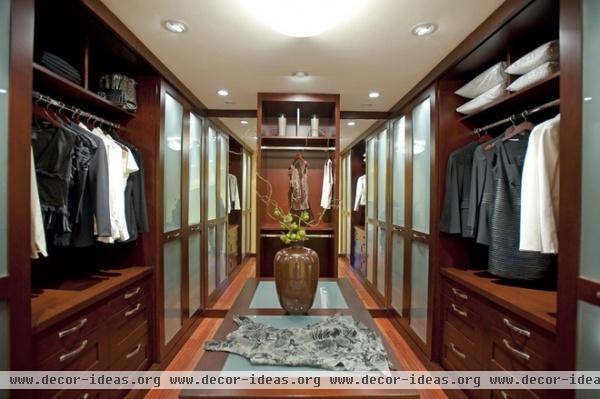
Project: Turning a spare room into a walk-in closet.
Why: If your current closet is too small or poorly organized, or your clothes are distributed all around the house, a closet conversion could be just the ticket.
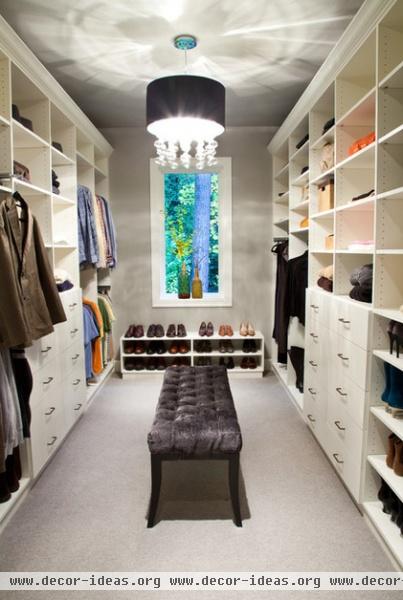
Things to consider: Almost any space can be turned into a closet, although the task will be easier if the room is a standard rectangle or square. “Working with different angles is trickier,” says Janie Lowrie of Closet Theory, a West Coast closet design firm.
While windows can provide welcome illumination and ventilation, too much sun can fade clothes, and too many windows can reduce the amount of wall space available. (The room’s heat source shouldn’t affect your decision; it’s easy to notch around baseboards or to redirect floor vents into a toe kick.)

Closet systems fall into two basic types: wall mounted and floor mounted. Wall-mounted closets are affixed directly to the wall or hung from a rail mounted onto the wall. (Elfa is a popular manufacturer of wall-mounted closets.)
Floor-mounted closets are attached to the wall as well, but get most of their support from the floor. For that reason they tend to look more like built-in cabinetry.
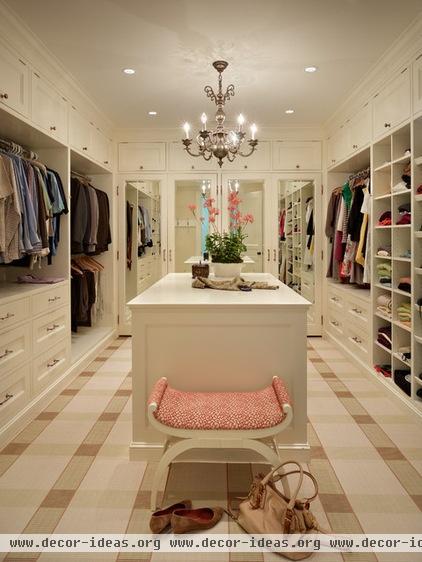
Which system you choose will depend largely on two factors: looks and budget. Wall-mounted systems are usually less costly, combining coated-wire baskets and racks with hanging wood shelves for a look that tends to be more contemporary and utilitarian. Floor-mounted systems are usually more expensive, and are typically made from particleboard panels covered with melamine. “Melamine seems to be the king of closets,” says Patrick Layne, vice president of Valet Custom Cabinets & Closets in Campbell, California. “It’s very durable, it’s cost effective, and you can get it to look closest to a wood closet.”
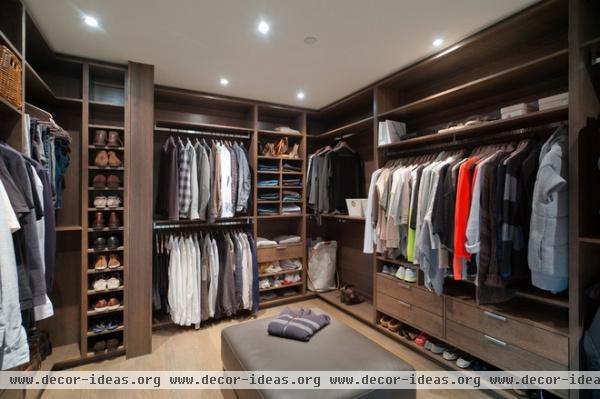
Depending on the design, finish and trim, floor-mounted closets can be adapted to nearly any style of decor, and tend to look more integrated into the architecture of the home. There’s no inherent difference in quality or durability between wall- and floor-mounted systems.
A basic closet system features rods for short, long and medium-length hung items; shallow drawers for underwear, socks and belts; deeper drawers for sweaters and T-shirts; and open shelves for shoes and sweats. Few customers stop there, however.
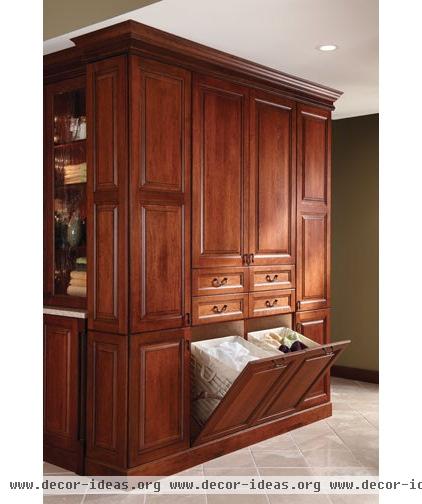
“One pole and one shelf isn’t working for people,” says Martin. Her customers often opt for jewelry racks, belt and tie storage, charging stations, safes and, increasingly, twin hampers — one for laundry, another for dry cleaning.
Valet rods are a very popular feature right now; these hooks extend out to hold dry cleaning, clothes for packing or the next day’s wardrobe. People don’t just want closets anymore, Martin asserts. “They want dressing rooms.”

Closet lighting has also evolved in recent years, with LED strip lighting augmenting or replacing recessed cans or track lighting. LEDs use less electricity, produce less heat and can be surface mounted and plugged in, so they don’t require ceiling access.
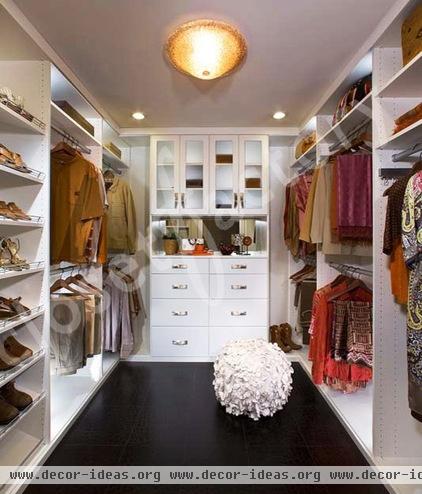
Who to hire: It’s possible to design and install a walk-in closet yourself — especially if you’re utilizing a coated-wire or simple melamine system from a big-box store. If you don’t have the time or don’t trust your skills, an independent contractor, carpenter or handyperson could do the work as well.
If you’re more concerned about maximizing space or making the results look good, consider hiring an expert. “An experienced closet designer knows how to get the most out of a space,” says Layne. If you’re uncertain about what you need and how much it might cost, try a free consultation from a company such as California Closets and Elfa.
If you want to benefit from a professional closet designer’s expertise, but still prefer to do the work yourself, consider hiring a closet company to design your closet and furnish you with CAD drawings. This isn’t common, and you might encounter some resistance, but for a fee of approximately $400 to $600, you could come away with precise, professional plans.
Find a closet designer on Houzz
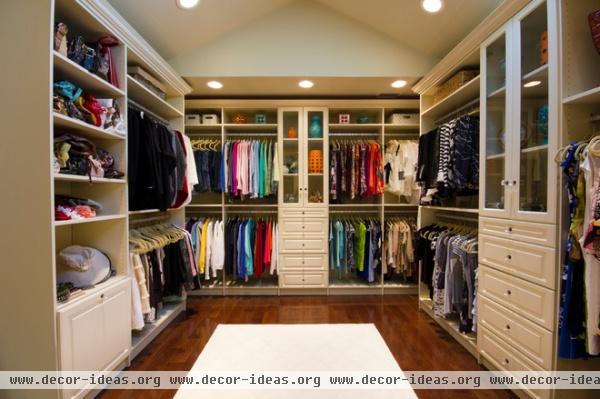
Project length: If you’re tackling the project yourself, the time it takes will depend on your skills and the complexity of the job. For a professionally installed closet, allow four to six weeks from conception to completion — although custom jobs can take longer.
Cost: Varies with the size, quality and complexity of the closet conversion and the region in which you live.
That said, a low-end walk-in closet will generally set you back $500 to $1,500. You can expect to spend $1,500 to $8,000 for a medium-quality closet, and $8,000 to $12,000 (or more) for a higher-end setup with fancier finishes and more features.
As with most things these days, the sky’s really the limit. Martin recently completed a closet that cost about $75,000 and included a pneumatic elevator to the bedroom above.
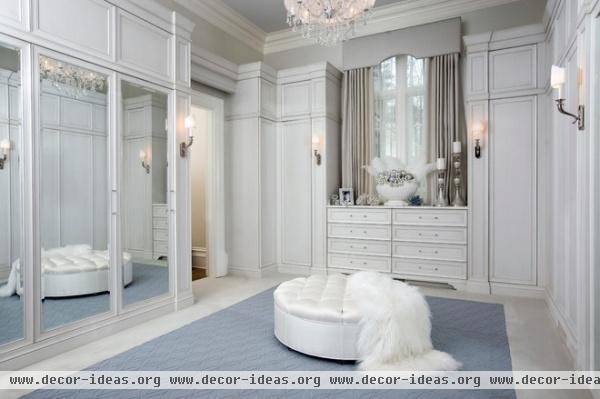
Permit: Generally you don’t need a permit to turn a spare room into a closet. But if you’re changing the room’s wiring to add lighting or outlets, or are altering the plumbing to accommodate a coffee bar or ice maker, a permit might be required, depending on the building codes in your jurisdiction.
Best time to do this project: Summer is the busiest time for closet installers, so if you want to minimize your wait, consider doing the work in spring or fall. Spacious closets require a surprising amount of material to build, so dry weather is optimal for hauling components in and out of the house. If you’re going with painted finishes, they’ll dry more quickly when the weather is less humid or rainy.
More: The 15 Most Popular Closet Luxuries on Houzz












